Heterogeneous blood-tumor barrier permeability determines drug efficacy in experimental brain metastases of breast cancer
- PMID: 20829328
- PMCID: PMC2999649
- DOI: 10.1158/1078-0432.CCR-10-1564
Heterogeneous blood-tumor barrier permeability determines drug efficacy in experimental brain metastases of breast cancer
Abstract
Purpose: Brain metastases of breast cancer appear to be increasing in incidence, confer significant morbidity, and threaten to compromise gains made in systemic chemotherapy. The blood-tumor barrier (BTB) is compromised in many brain metastases; however, the extent to which this influences chemotherapeutic delivery and efficacy is unknown. Herein, we answer this question by measuring BTB passive integrity, chemotherapeutic drug uptake, and anticancer efficacy in vivo in two breast cancer models that metastasize preferentially to brain.
Experimental design: Experimental brain metastasis drug uptake and BTB permeability were simultaneously measured using novel fluorescent and phosphorescent imaging techniques in immune-compromised mice. Drug-induced apoptosis and vascular characteristics were assessed using immunofluorescent microscopy.
Results: Analysis of over 2,000 brain metastases from two models (human 231-BR-Her2 and murine 4T1-BR5) showed partial BTB permeability compromise in greater than 89% of lesions, varying in magnitude within and between metastases. Brain metastasis uptake of ¹⁴C-paclitaxel and ¹⁴C-doxorubicin was generally greater than normal brain but less than 15% of that of other tissues or peripheral metastases, and only reached cytotoxic concentrations in a small subset (∼10%) of the most permeable metastases. Neither drug significantly decreased the experimental brain metastatic ability of 231-BR-Her2 tumor cells. BTB permeability was associated with vascular remodeling and correlated with overexpression of the pericyte protein desmin.
Conclusions: This work shows that the BTB remains a significant impediment to standard chemotherapeutic delivery and efficacy in experimental brain metastases of breast cancer. New brain permeable drugs will be needed. Evidence is presented for vascular remodeling in BTB permeability alterations.
©2010 AACR.
Figures
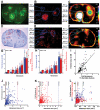
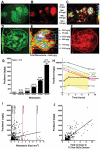
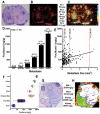


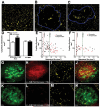
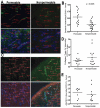
Comment in
-
Heading in a new direction: drug permeability in breast cancer brain metastasis.Clin Cancer Res. 2010 Dec 1;16(23):5605-7. doi: 10.1158/1078-0432.CCR-10-2502. Epub 2010 Nov 2. Clin Cancer Res. 2010. PMID: 21045085
-
Efflux Limits Tumor Drug Delivery Despite Disrupted BBB.Trends Pharmacol Sci. 2021 Jun;42(6):426-428. doi: 10.1016/j.tips.2021.03.001. Epub 2021 Mar 15. Trends Pharmacol Sci. 2021. PMID: 33736874
References
-
- Lin N, Bellon J, Winer E. CNS metastases in breast cancer. J Clin Oncol. 2004;22:3608–17. - PubMed
-
- Lin NU, Winer EP. Brain metastases: the HER2 paradigm. Clin Cancer Res. 2007;13:1648–55. - PubMed
-
- Pestalozzi BC, Zahrieh D, Price KN, Holmberg SB, Lindtner J, Collins J, et al. Identifying breast cancer patients at risk for Central Nervous System (CNS) metastases in trials of the International Breast Cancer Study Group (IBCSG) Ann Oncol. 2006;17:935–44. - PubMed
-
- Shmueli E, Wigler N, Inbar M. Central nervous system progression among patients with metastatic breast cancer responding to trastuzumab treatment. Eur J Cancer. 2004;40:379–82. - PubMed
Publication types
MeSH terms
Substances
Grants and funding
LinkOut - more resources
Full Text Sources
Other Literature Sources
Medical
Research Materials
Miscellaneous

